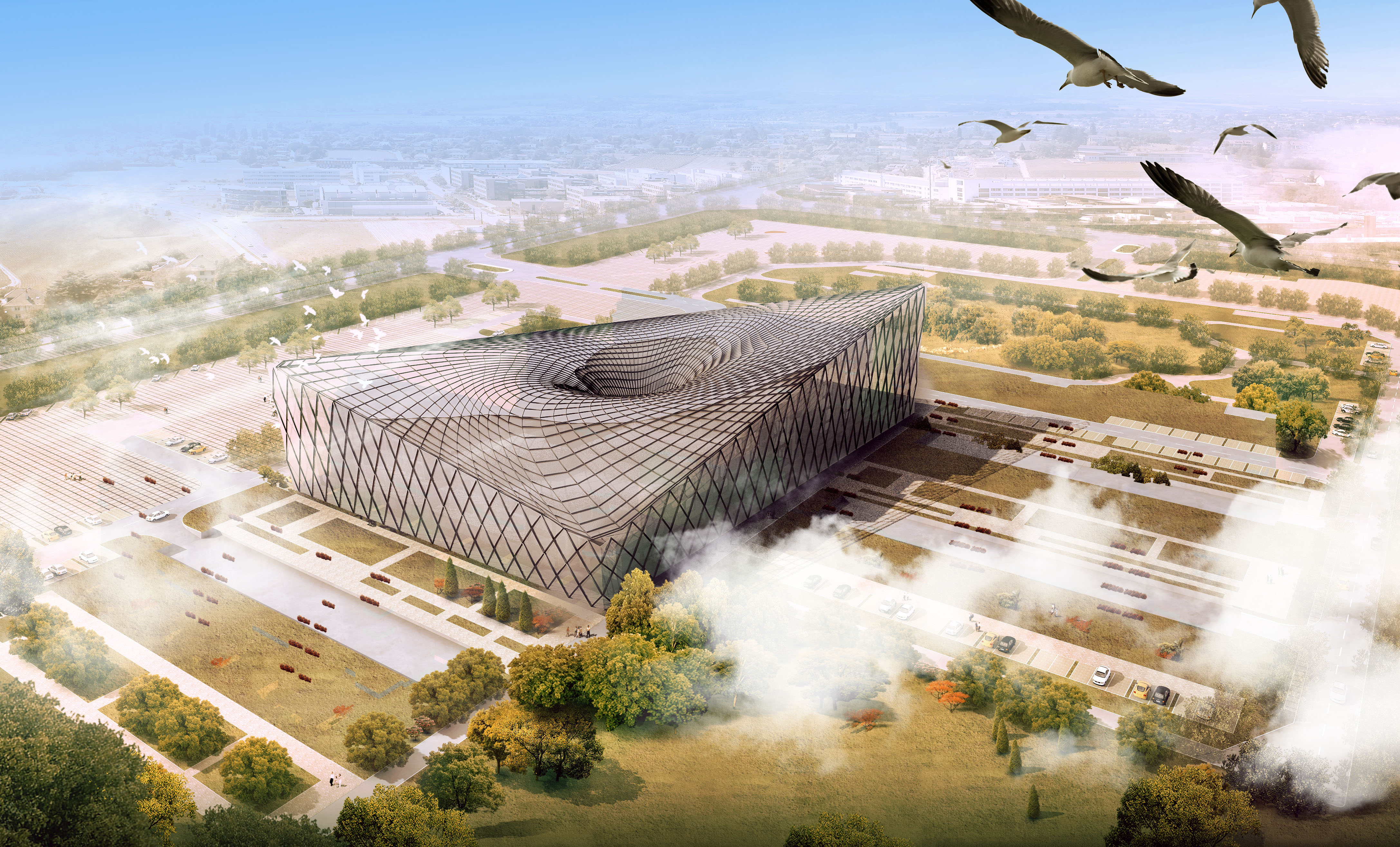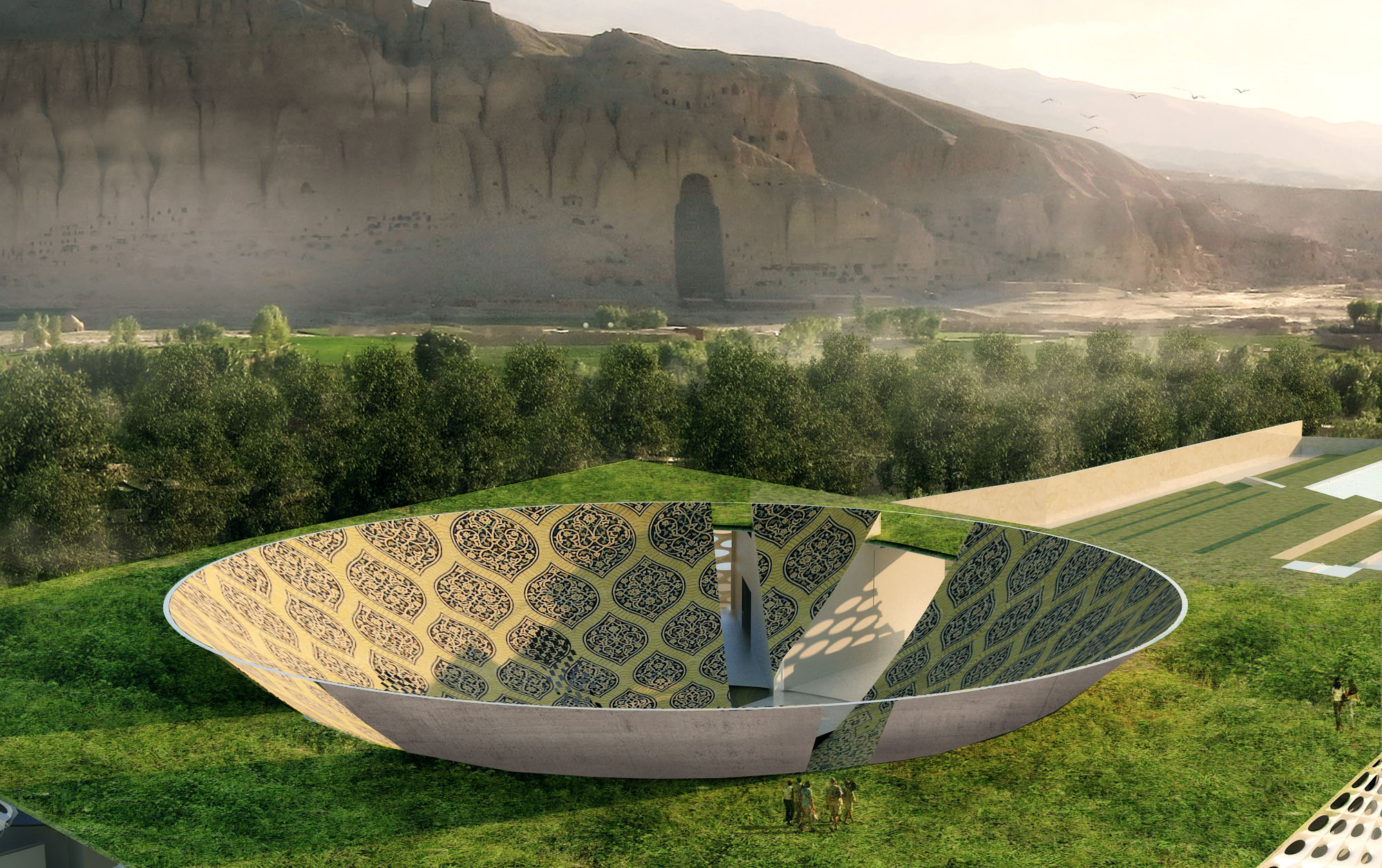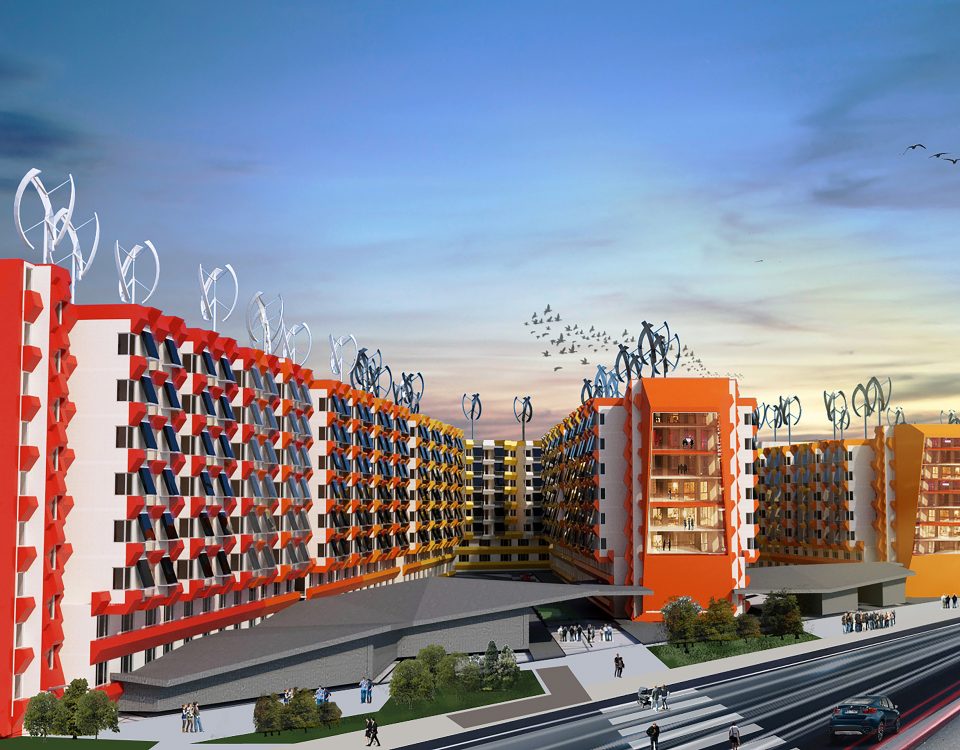
Architecture @ Zero Competition 2015: VESTA in collaboration with HrH Architecture
05/01/2014
Bamyan Cultural Center Competition:Resonance of Absence
04/29/2014Organization:eVolo Magazine
Location:Central Desert of Iran
Challenge: Established in 2006, the annual Skyscraper Competition is one of the world’s most prestigious awards for high-rise architecture. It recognizes outstanding ideas that redefine skyscraper design through the implementation of novel technologies, materials, programs, aesthetics, and spatial organizations along with studies on globalization, flexibility, adaptability, and the digital revolution. It is a forum that examines the relationship between the skyscraper and the natural world, the skyscraper and the community, and the skyscraper and the city. The participants should take into consideration the advances in technology, the exploration of sustainable systems, and the establishment of new urban and architectural methods to solve economic, social, and cultural problems of the contemporary city including the scarcity of natural resources and infrastructure and the exponential increase of inhabitants, pollution, economic division, and unplanned urban sprawl.
Nibir: Conglomeration of a Traditional Desert City
As the highest point in the paths of the planets, Nibiru was considered the seat of the summus deus who pastures the stars like sheep, in Babylon identified with Marduk. This is an Akkadian term, translating to “crossing” or “point of transaction”. Nibiru is described more closely on a complete cuneiform tablet: “Nibiru, which is said to have occupied the passageways of heaven and earth, because everyone above and below asks Nibiru if they cannot find the passage. Nibiru is Marduk’s star which the gods in heaven caused to be visible. Nibiru stands as a post at the turning point. The others say of Nibiru the post: “The one who crosses the middle of the sea (Tiamat) without calm, may his name be Nibiru, for he takes up the center of it”. The path of the stars of the sky should be kept unchanged.”
As the highest point in the paths of the planets, Nibiru was considered the seat of the summus deus who pastures the stars like sheep, in Babylon identified with Marduk. This is an Akkadian term, translating to “crossing” or “point of transaction”. Nibiru is described more closely on a complete cuneiform tablet: “Nibiru, which is said to have occupied the passageways of heaven and earth, because everyone above and below asks Nibiru if they cannot find the passage. Nibiru is Marduk’s star which the gods in heaven caused to be visible. Nibiru stands as a post at the turning point. The others say of Nibiru the post: “The one who crosses the middle of the sea (Tiamat) without calm, may his name be Nibiru, for he takes up the center of it”. The path of the stars of the sky should be kept unchanged.”

Magnifying Sustainable Traditions
Centuries of living in arid climate has taught local habitants valuable lessons about sustainability. Considering the amount of the deserts in the world and comparing the distribution of the deserts to the distribution of the population shows the importance of making deserts habitable. One of the most important climatic parame¬ters for desert houses is wind. Persians have developed a mechanism to convert hot wind of desert carrying sands into a humid soft breeze for inside of their houses. Wind-catcher is a tower which takes the desert wind, directs it into the basement to take its sands and moisten it, then blows the breeze into internal space. This mechanism can work in an urban scale while we already have all we need: a high-rise tower, some under¬ground levels for moderating the wind, and a semi-closed internal space. Furthermore, there is an alteration of wind-catcher which works vice versa; the wind that blows through a hole produces a negative pressure and intakes the breeze. The hole at the upper part of our structure will provide a strong suction force to enforce this ventilation system. A traditional passive system which is totally sustainable, grows into an urban scale.
Centuries of living in arid climate has taught local habitants valuable lessons about sustainability. Considering the amount of the deserts in the world and comparing the distribution of the deserts to the distribution of the population shows the importance of making deserts habitable. One of the most important climatic parame¬ters for desert houses is wind. Persians have developed a mechanism to convert hot wind of desert carrying sands into a humid soft breeze for inside of their houses. Wind-catcher is a tower which takes the desert wind, directs it into the basement to take its sands and moisten it, then blows the breeze into internal space. This mechanism can work in an urban scale while we already have all we need: a high-rise tower, some under¬ground levels for moderating the wind, and a semi-closed internal space. Furthermore, there is an alteration of wind-catcher which works vice versa; the wind that blows through a hole produces a negative pressure and intakes the breeze. The hole at the upper part of our structure will provide a strong suction force to enforce this ventilation system. A traditional passive system which is totally sustainable, grows into an urban scale.

Miniaturization of a 2D settlement: “In the end, it seems to me, neither Wright nor Soleri has produced structures that are, in any normal sense, sympathetic or proper to the desert.” Peter Reyner Banham Iranian – Islamic tradition for shaping cities in the desert consists of a Bazaar as the backbone of the whole city, besides public spaces like Mosques, Palaces and Plazas alongside the Bazaar. These large-scale spaces are floating in an ocean of low-rise small houses with some perfect-shaped courtyards and wind-catchers here and there. Converting this 2D structure into a 3D skyscraper saves the organization of the space, but not the shapes. Bazaar will be a chain of spherical spaces which swirls around the mass all along the height, while public spaces are still larger spheres close to this chain. Houses will fill the volume and small holes in the skin moderate the radiation, temperature and humidity, just like 2D courtyards.
Geltaftan - Ceramic layering: In 1984, Nader Khalili, proposed Geltaftan as an inventory method of construction on the moon to NASA. “Gel” means clay and “Taftan” means burning. Based on his method we can melt and fuse desert soil on top of dunes into a ceramic layer. The soil beneath the structure can be hollowed and this skin provides a con¬trolled atmosphere for living. Structurally reinforced layers can be built on top of each other through time to raise a skyscraper.
Geltaftan - Ceramic layering: In 1984, Nader Khalili, proposed Geltaftan as an inventory method of construction on the moon to NASA. “Gel” means clay and “Taftan” means burning. Based on his method we can melt and fuse desert soil on top of dunes into a ceramic layer. The soil beneath the structure can be hollowed and this skin provides a con¬trolled atmosphere for living. Structurally reinforced layers can be built on top of each other through time to raise a skyscraper.




